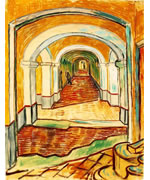I've decided a wiki is the best way to showcase the links, resources, and artifacts for my independent inquiry on eMentoring tools. But with nearly one hundred different free, web-based programs for generating wikis, choosing the right one can be a daunting task.
In this post, I will share a little of what I know about wikis in general, and then I will share the process I followed for selecting the right wiki program for my project on eMentoring.
First, a little background on wikis.
Simply put, a wiki is an interactive, editable web site built around a specific topic. The best wikis grow and thrive within a collaborative community of users who share an interest in the topic.
Perhaps the most famous example of a wiki is the international online encyclopedia, Wikipedia. But there are many examples of small-scale wikis, too. Of course, the scalability, utility, and constructivist nature of wikis have led to their widespread adoption across many content areas in education. For example, the International Collaborative Literature Project is a wiki shared between two classrooms, one in Israel and the other in Canada.
The Classroom 2.0 wiki is a great resource for educators to share resources and links about web-based technologies in education. It has a section specifically about wikis. (Now we are talking about "wikis within a wiki." Hope this isn't getting too confusing!) Visit this page and watch the embedded video titled "Wikis in Plain English." After watching the instructive video, scroll down to view an exhaustive list of potential uses for wikis in the classroom. This page also features links to specific wiki applications, examples of classroom wikis, articles and research on wikis, and many other resources.
Now, how to choose from the many free wiki applications currently available online?
Well, I started by reading the archived discussion on wikis at my favorite network for technology educators, Classroom 2.0. In this forum, teachers from all corners of the globe share their likes and dislikes about the various wiki platforms. These are invaluable, in-the-trenches insights from real folks who have already experienced the ins and outs of wikis in educational contexts.
The three most popular wiki applications discussed in the Classroom 2.0 forum are PBwiki, Wetpaint, and Wikispaces. These applications tend to meet educators' needs in terms of cost (free), privacy and security settings, and utility/ease of use.
I also noticed from the discussion that as teachers grow more comfortable with the wiki concept, they are beginning to demand more artistic control over the design and appearance of pages. Consequently, many teachers favor Wetpaint, which allows users to choose templates and font colors. Even those who love Wikispaces indicate a desire for more graphic design capability. (But others say they prefer Wikispaces clean, simple lines.)
All three applications -- PBwiki, Wetpaint, and Wikispaces -- offer features to customize and "brand" pages, and all three allow users to embed videos and other multimedia files. Wikispaces recently released a customizable widget feature.
To sum up, much of what drives wiki choice is educator personality (a preference for simplicity over artistic control, for example) followed by the intended audience. Do you plan to use the wiki to collaborate with colleagues, or is it intended to foster collaboration within a class of fourth graders?
Next, I visited WikiMatrix.
WikiMatrix allows visitors to compare multiple wikis and identify the best wiki application to fit their needs. At this writing, it is possible to compare 97 different wikis on the matrix, so unless you arrive with a few applications already in mind, I highly advise you use the handy WikiMatrix Choice Wizard. The wizard performs an instant needs assessment after you click your responses to a short list of questions.
It took me less than five minutes to complete the wizard. In the process, I not only narrowed the list down from 97 to 19 wikis, but I also learned a lot about the basic considerations and motivations that go into the creation of wikis. This was a powerful exercise!
I also felt vindicated to see that PBwiki, Wetpaint, and Wikispaces made the short list spat out by the wizard.
After completing the wizard, it is possible to click a button to generate a comparison matrix. The matrix enables you to judge the apps on a number of different criteria such as costs, intended audience, bandwidth requirements, topic restrictions, and security features. The matrix contains loads of information but is not very easy on the eyes; be prepared to do a lot of horizontal scrolling if you want to compare more than six or seven apps at a time.
I was in no mood to look at 19 wiki apps, so I generated a smaller matrix focusing on PBwiki, Wetpaint, and Wikispaces.
In the final analysis I chose Wikispaces for my project because of teacher testimonials regarding technical support and responsiveness as well as the fact it was created specifically for small interest groups and educational settings. In the long run, I want to create a web site that educators with varying levels of techno savvy will feel comfortable accessing, reading, and possibly editing. What Wikispaces lacks in visual appeal (compared to Wetpaint), it makes up for in terms of ease of use.
And that's what I think.



